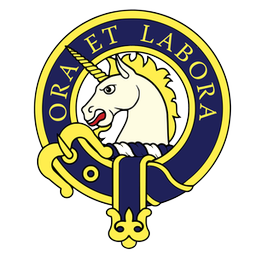Athletes, please click here to register.
History
The Highland Games are festivals held throughout the year in Scotland and other countries as a way of celebrating Scottish and Celtic culture and heritage. In their original form many centuries ago, Highland games revolved around athletic and sports competitions. Through these competitions, the king would select the finest athletes to be his personal guard and entourage. The games were also a way for
the clans to demonstrate their relative strength to each other without actually having to go to war. Some of the implements used in the games were created as alternatives to traditional weapons when England forbade any Scotsman from bearing arms. Though other activities were always a part of the festivities, many today still consider Highland athletics to be what the games are all about—in short, that the athletics are the Games, and all the other activities are just entertainment. Regardless, it remains true today that the athletic competitions
are at least an integral part of the events, and one—the caber toss—has come to almost symbolize the Highland games. Although quite a range of events can be a part of the Highland athletics competition, a few have become standard.
 Caber Toss
Caber Toss
The Caber is a tree that has been cut and trimmed down so that one end is slightly wider than the other. It can vary in length from 16 to 22 feet and between 70 and 150 pounds. The smaller end is rounded off so it will be easy to cup in the thrower’s hands. The caber is stood up for the thrower with the large end up. The thrower hoists the caber up and cups the small end in his hands. He then takes a short run with the caber and then stops and pulls the caber so that the large end hits the ground and the small end flips over and faces away from the thrower. The caber is scored for accuracy as though the thrower is facing the 12:00 position on a clock face. A judge behind the thrower calls how close to the 12:00 position the small end of the caber lands, 12:00 being a perfect toss. If the caber is not turned, a side judge calls the degrees of the angle the caber makes with the ground.
Stone Throw
This event is similar to the modern-day shot put as seen in the Olympic games. Instead of a steel shot, a large stone of variable weight is often used. There are also some differences from the Olympic shot put in allowable techniques. There are two versions of the stone toss events, differing in allowable technique. The “Braemar Stone” uses a 22 lbs stone for men (13lbs. for women) and does not allow any run up to the toeboard or “trig” to deliver the stone, i.e., it is a standing put. In the “Open Stone” using a 16 lbs. stone for men (or 9 lbs. for women), the thrower is allowed to use any throwing style so long as the stone is put with one hand with the stone resting cradled in the neck until the moment of release. Most athletes in the open stone event use either the “glide” or the “spin” techniques. Weight for distance also known as the weight throw event. There are actually two separate events, one using a light (28 lb. for men and 14 lb. for women) and the other a heavy (56 lbs for men, 42 lbs. for masters and lightweight men, and 28 lbs for women) weights. The weights are made of metal and have a handle attached by means of a chain. The implement is thrown with one hand using any technique. Usually, a spinning technique is employed. The longest throw wins.
Weight For Height
The athletes attempt to toss a 56 lbs. weight for men (28 lbs. for women) with an attached handle over a horizontal bar using only one hand. Each athlete is allowed three attempts at each height. Successful clearance of the height allows the athlete to advance into the next round at a greater height. The competition is determined by the highest successful toss with the fewest misses being used to break tie scores.
Sheaf Toss
A bundle of straw (the sheaf) weighing 20 pounds for the men and 10 lbs. for the women and wrapped in a burlap bag is tossed vertically with a pitchfork over a raised bar much like that used in pole vaulting. The progression and scoring of this event are similar to the Weight Over The Bar. There is significant debate among athletes as to whether the sheaf toss is, in fact, an authentic Highland event. Some argue it is actually a country fair event, but all agree that it is a great crowd-pleaser.
Hammer Throw
This event is similar to the hammer throw as seen in modern-day track and field competitions, though with some differences. In the Scottish event, a round metal ball (weight 16 or 22 lbs. for men and 12 or 16 lbs. for women) is attached to the end of a shaft about 4 feet in length and out of wood, bamboo, rattan or plastic. With the feet in a fixed position, the hammer is whirled about one’s head and thrown for distance over the shoulder. Hammer throwers sometimes employ specially designed footwear with flat blades to dig into the turf to maintain their
balance and resist the centrifugal forces of the implements as it is whirled about their head.







